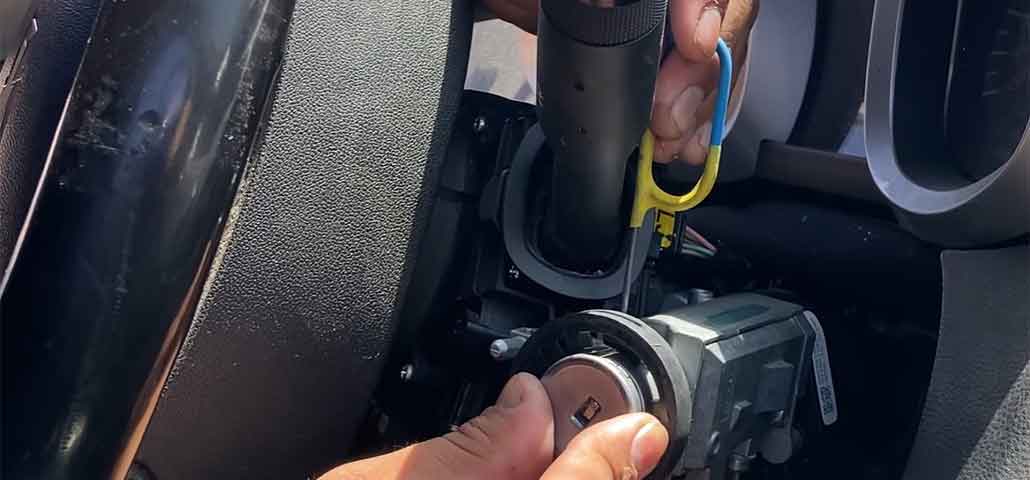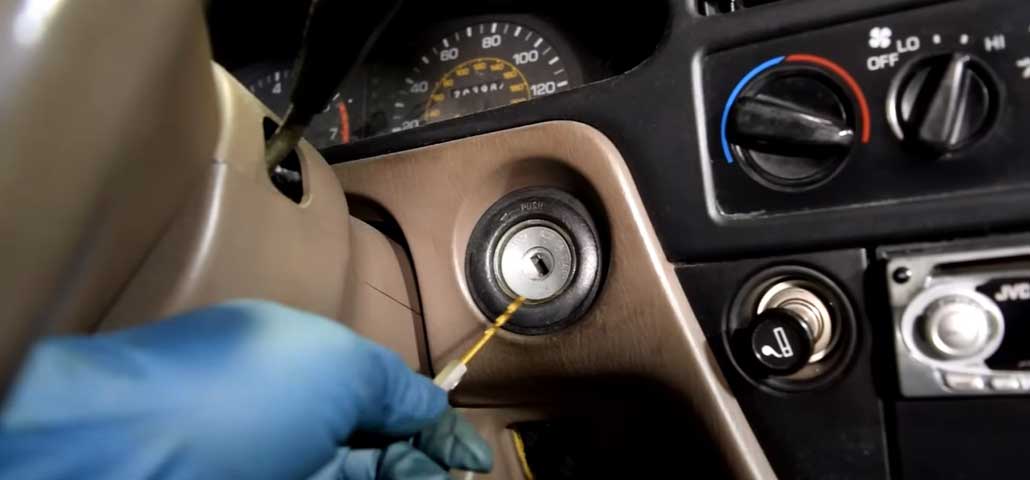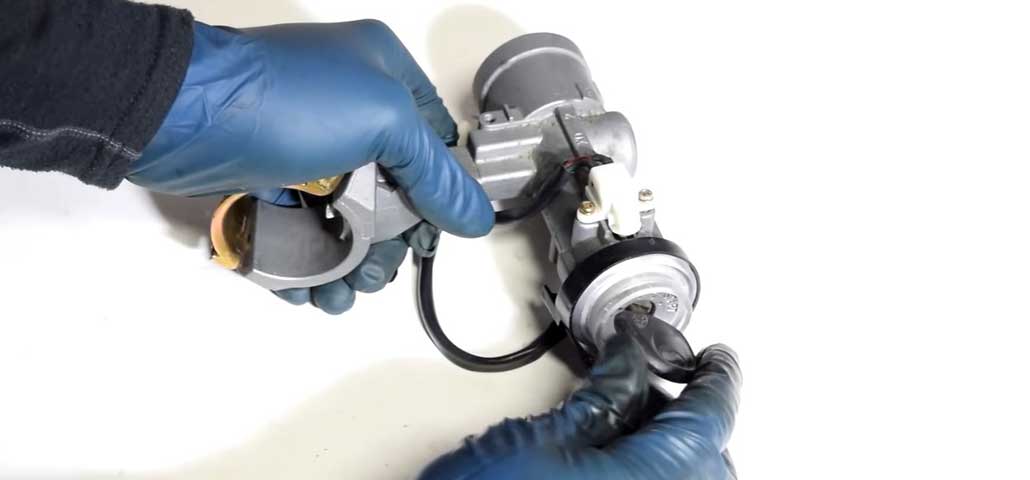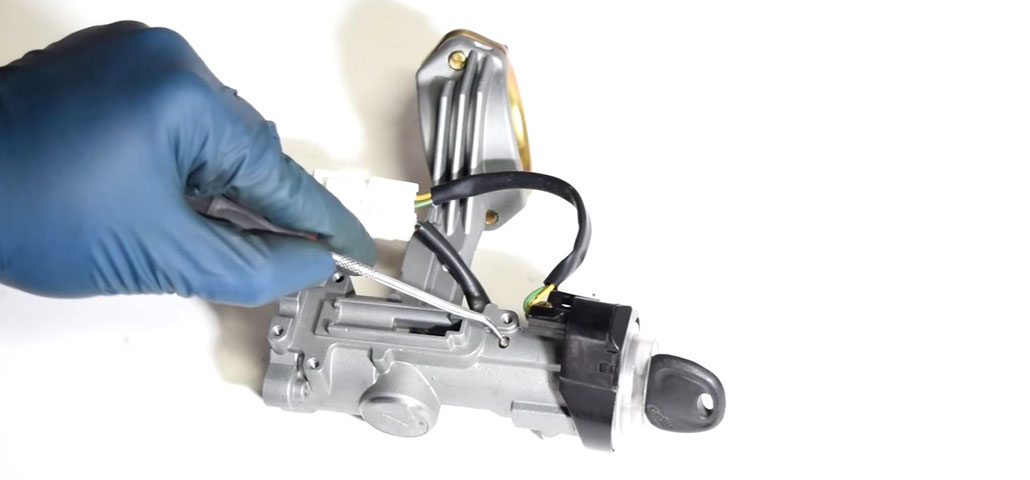As an Amazon Associate I earn from qualifying purchases.
Unlocking the Mystery: Learn how to remove ignition lock cylinder chevy without key! Discover step-by-step instructions for safely tackling this task without the need for a key. Follow our expert guide to gain valuable insights into Chevy ignition systems and effortlessly troubleshoot issues. Get ready to unlock the secrets of your Chevy’s ignition lock cylinder with ease! Let’s dive into the world of how to remove ignition lock cylinder chevy without key.
Common Issues That Lead to Ignition Lock Cylinder Removal
Understanding the why behind this operation is critical. Here are the three primary reasons you might find yourself needing to remove the ignition lock cylinder without having a key to hand:
- Key Stuck in Ignition: It’s a day-ruiner. You get home, ready to relax, and the key won’t turn or come out. This frustrating situation is often a sign that the lock’s tumblers have seized, hindering the smooth operation of your vehicle’s ignition system. It can be caused by dirt, debris, or a worn-out key that no longer works with the lock.
- Ignition Jam: Similar to the above but more severe, an ignition jam occurs when the key is stuck and the cylinder won’t turn. There’s no ‘give’ – it’s like trying to turn concrete. Damage to the ignition cylinder or a defective ignition switch are possible causes of this problem. It can be a frustrating experience that requires immediate attention to resolve the problem and regain control over your vehicle’s ignition system.
- Worn-Out Cylinder: As cars age, their parts can deteriorate. If you’ve been using the same ignition lock cylinder for years, it may stop working properly, making it difficult to start your vehicle. Frequent usage, inclement weather, or poor maintenance can all contribute to this. To restore functionality, replace the worn-out cylinder with a new one for smooth key operation and reliable engine ignition.
Step-by-Step Guide: How to Remove Ignition Lock Cylinder Chevy Without Key

Not having the original key for your vehicle presents an undeniable challenge, but it’s a hurdle you can leap over. There are a few common ways to approach this issue, and we’ll outline each one meticulously so you can decide which method you’re most comfortable with. Regardless of which pathway you tread, remember that patience is not just a virtue here – it’s an absolute necessity.
Method 1: Screwdriver or Awl
Tools You’ll Need:
- Flathead screwdriver or awl
- Duct tape (optional)
The Method:
- To begin, carefully select the appropriate screwdriver or awl for the task at hand. It’s crucial to find a tool that fits snugly into the keyhole, allowing for a bit of ‘play’ or movement.
- If you decide to use the awl, consider adding a practical touch by wrapping a bit of duct tape around the handle. This simple step will create a makeshift grip, ensuring better control and maneuverability.
- With utmost caution, insert the chosen tool into the keyhole. It should slide in without any issues, however there could be some resistance. If you encounter any obstruction or it feels caught, it’s important not to force it. Patience is key in this process.
- Once the tool is properly situated, gently jiggle it. The objective here is to manipulate the tumblers contained within the cylinder. As you rock the tool back and forth, apply gradual pressure to mimic the turning motion of a key. This delicate combination of movement and pressure will help initiate the unlocking process.
- Any movement or play in the cylinder should be closely observed. If you detect even the slightest shift or give, it’s an indication that progress is being made. You may now, while still jiggling the tool, slowly increase the pressure. Remember, patience and gentle persistence are crucial to achieving success.
- Eventually, through your careful efforts, you should reach a point where the cylinder becomes loose enough to fully rotate, releasing it from its column. This accomplishment will show that you have completed the work at hand successfully
You can open a cylinder with skill and confidence if you follow these comprehensive instructions.
Tips:
- Moderation is key. Apply just enough pressure and jiggle the tool with care. You’re aiming for finesse, not a brute show of strength.
- This method can take time. Be patient, and occasionally back off to reassess.
- If the initial tool isn’t granting success, try a different screwdriver or awl. The right fit is crucial.
Method 2: Paperclip or Wire
Tools You’ll Need:
- Large, sturdy paperclip or a piece of straight wire
- Needle-nose pliers (optional)
The Method:
- To begin, start by carefully straightening the paperclip or wire until it forms a perfectly aligned line. If you have a wire, you can use needle-nose pliers to assist you in this process, ensuring precision and accuracy.
- After that, take the paperclip that has been straightened and gently bend the little hook at one end. You will be able to manipulate the pins within the lock by using this hook as the tumbler lifter.
- With the wire or paperclip now prepared, carefully insert it into the keyhole of the lock. Your aim is to navigate it towards the back of the cylinder, where the tumblers are located. Take your time and be patient as you maneuver the wire, ensuring it reaches the desired position.
- Once the wire is inserted correctly, apply gentle upward pressure with the makeshift hook, angling it in a way that moves the pins within the lock. It’s almost like playing a finger-puppet style game, where your dexterity and precision come into play. As you apply pressure, simultaneously try turning the cylinder with your other hand, using a gentle but firm grip.
- If you have successfully executed the previous steps, you will notice that the cylinder begins to give and eventually releases from the column. This signifies that you have successfully picked the lock, a skill requiring finesse and patience.
Remember, lock picking should only be done with proper authorization and for legal purposes, such as in cases where you have misplaced your keys and need to access your own property.
Tips:
- Precision is your friend. Be accurate with your upward pressure, and try to apply it evenly across all tumblers.
- Use tools that offer a comfortable grip. As you may be ‘picking’ for a while, your homemade tool will need to be operator-friendly.
- If one tool isn’t working, craft another or adjust the angle. Here, trial and error is the procedure.
Method 3: Drill
Tools You’ll Need:
- Cordless or manual drill
- Appropriate drill bit for the size of the keyhole
- Safety goggles
The Method:
- To begin, secure the steering column in a fixed position or adjust it to a comfortable angle for operating the drill effectively.
- Choose a drill bit that closely matches the size of the keyhole, opting for the smallest possible size. Start drilling into the center of the keyhole with precision.
- Execute slow and controlled movements while drilling, periodically pausing to inspect your progress. This deliberate approach ensures accuracy and prevents any unintended damage.
- As you continue drilling, the tumblers and lock pins within the cylinder will gradually be overcome, leading to a breakthrough.
- Once the tumblers and lock pins are successfully bypassed, the cylinder will become free to turn. This action will unlock the steering wheel, allowing it to release from the column securely.
Tips:
- Safety first. Wear your goggles, and ensure the drill is firmly in hand.
- Keep the drill straight and steady. One wrong move could lead to a damaged column.
- Be patient with the drilling. A steady, persistent hand will be more effective than trying to rush the process.
There are benefits and hazards associated with each of these strategies. The screwdriver and paperclip methods are relatively gentle, with varied success rates. The drill method is brute force incarnate and should be handled with immense caution.
Tips and Troubleshooting for Safe Cylinder Removal

No matter the method you choose, there are general tips and troubleshooting techniques that can enhance your success and keep frustration at bay.
Patience Is Not a Virtue – It’s a Necessity
Approach the task with the understanding that this may take some time. The act of removing an ignition lock cylinder isn’t a race. It’s a meticulous operation that sometimes requires a bit of luck and a heap of calm, steady effort.
When in Doubt, Back It Out
Hitting a wall? Don’t force a jam. If you’re encountering resistance, especially sudden resistance, it’s time to reassess. Back your approach up, reevaluate, and try a slightly different method or tool.
The Power of Penetration Testing
Keep in mind that sometimes finding “the one” is the key when employing the paperclip method.‘ If a pin or tumbler isn’t moving as the others are, try applying more or less pressure. It’s a game of finesse and feel.
Preventative Measures and Maintenance

Having a harrowing experience with your vehicle’s ignition lock cylinder can serve as a powerful reminder to prioritize its maintenance. You may avoid having to remove the ignition lock cylinder in the future by using these helpful tips:
- Use the Right Key: It may seem surprising, but many ignition issues arise from using a mismatched or poorly fitting key. You may avoid needless problems by making sure you use the right key.
- Grease the Gears: While this phrase is used metaphorically, a little bit of lubrication inside the cylinder can make a significant difference. Grease should be used on a regular basis to assist maintain the gears operating smoothly and stop possible issues.
- Respect the Cylinder: It’s important to be mindful of how you handle the ignition cylinder. Overzealous turning the key can lead to damage over time. Taking a gentle and patient approach will help preserve the cylinder’s longevity.
- Maintain Consistency: If you notice that your key works fine on some days but not on others, it’s a clear sign that something is amiss. Keep an eye out for these discrepancies since they can point to a problem that needs to be fixed.
By incorporating these detailed tips into your vehicle maintenance routine, you can ensure that your ignition lock cylinder remains in optimal condition, avoiding any future inconveniences.
Conclusion
Knowing how to remove the ignition lock cylinder on a Chevy without a key is a valuable skill, often born out of necessity. It demands mechanical understanding, patience, and dexterity. Whether you’re dealing with a stuck key, an impenetrable jam, or a worn-out cylinder, this guide will help you through the fix-it process. Keep in mind that there is some danger involved with these approaches, so put your safety and the health of your automobile first. If something makes you uneasy or uncertain, get expert help. In order to maintain your automobile in optimal condition, proactive maintenance is essential. Keep your keys in good shape, and they’ll keep you moving forward.
Frequently Asked Questions
Q1. How to remove ignition lock cylinder chevy without key efficiently?
Answer: In order to effectively remove the ignition lock cylinder from a Chevy without a key, perform the following steps: To maintain safety throughout the procedure, disconnect the battery. Make a hole in the ignition lock cylinder using a tiny drill bit. Insert a screwdriver or a pick into the hole and turn it counterclockwise to release the cylinder. Once the cylinder is loose, carefully pull it out of the ignition assembly.
Q2: What If My DIY Attempts Fail?
Answer: If, after multiple attempts at each method, the cylinder remains stubbornly stuck, it’s a clear indication that a higher level of intervention is necessary. At this point, it is advisable to seek the expertise of a professional automotive locksmith or a trusted mechanic who specializes in handling such issues. Their breadth of expertise and experience will guarantee that the issue is handled carefully and successfully.
Q3: Should I Attempt the Drill Method First?
Answer: No. This method is irreversible and should only be used when all other options have been thoroughly explored and found to be unsatisfactory or impossible to implement. Before taking this irrevocable course of action, it is imperative to think through the ramifications and repercussions.
Q4: How Can I Be Sure I'm Using the Right Method?
Answer: Before beginning, it’s important to assess the level of severity of the issue at hand. If it appears to be a minor problem, you can start by using the screwdriver or paperclip method, which are simple and effective solutions. However, in dire circumstances where the situation calls for it, the drill method can be employed as a last resort. It’s important to proceed cautiously and select the right course of action depending on how serious the problem is.
Q5: What Will I Need Once the Cylinder Is Removed?
Answer: If you’ve successfully removed the ignition lock cylinder, congratulations! Now, in order to ensure a smooth replacement process, it is important to have some key details at hand. Ensure you have the VIN number, along with the brand, model, and year of your car. These specific details will help you find the perfect and accurate replacement for your ignition lock cylinder, ensuring a seamless fit and optimal functionality. So, take a moment to gather these essential pieces of information before proceeding with the replacement process.
Q6: Can I Start the Car without the Ignition Lock Cylinder?
Answer: No, the ignition lock cylinder is an essential component of the starting process. It serves as the interface between the key and the vehicle’s electrical system, allowing the key to connect and engage the ignition switch, which in turn initiates the engine. Without the ignition lock cylinder, the key would have no means to communicate with the engine, rendering the starting process impossible.
A Personal Experience with Ignition Woes
I can vividly recall the day my key turned in the ignition, and nothing happened. It was as if my car had forged an unholy pact with that key, a vow of silence to see which of us would break first. When I saw I would not have a key to remove the lock cylinder, I became really frustrated. As I jostled with makeshift tools and felt the resistance of those internal tumblers, a confluence of determination and anxiety flooded me. I must have spent hours on that task, my forehead polished by the against-the-grain slide of the car’s dusty steering wheel. Moments like these are why we learn to fix things – not just for the satisfaction of a spinning cylinder but for the peace of mind that comes with knowledge and self-reliance. I’d been successful, but I also knew I’d be reaping the benefits in the form of a smooth-functioning ignition system for years to come.
Why Trust Us?
Our experienced mechanics and automotive enthusiasts provide accurate, actionable information for your car care. We prioritize your trust, delivering reliable content on Chevrolets and other vehicles. While we offer detailed advice, always refer to your vehicle’s manual and consult professionals for safety and legal compliance.
As an Amazon Associate I earn from qualifying purchases.

